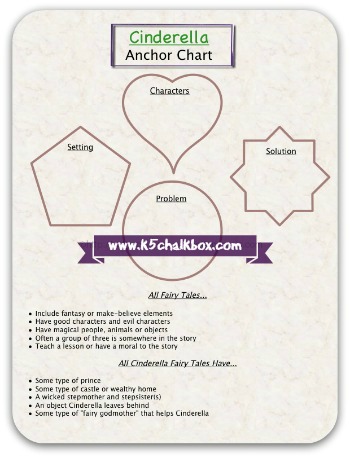Cinderella stories are exciting for students of all ages. This teaching unit is well-designed, uses cultural variants of the Cinderella story, and is kid tested for fun (and teacher approved!).
These stories provide an opportunity to go in-depth with cultural literacy, which is a standard for my grade level (second). But what does that mean?
We develop two types of schemata throughout our lives: formal schemata and content schemata. Formal schemata is understanding how a reading text is organized, and content schemata is about the content of the text.
In other words, formal is about the pure mechanics of reading – decoding, text structure, etc, but content deals with actually making meaning (a top-down approach resulting in meta-cognition).
The great thing about Cinderella stories is that the children already have the background knowledge necessary to understand the structure of the story. They can use that to build cultural literacy on – information about the people, places, events and ideas that are important in different societies.
History of Cinderella
The story of Cinderella is captivating for all students (even the boys once they realize there are boy-friendly versions!)..
The first known account of this fairy tale is from ancient China, and it actually started out as a folk tale.
In the first writing by Tuan Ch’eng in the 9th century A.D., it had all the elements of classic Chinese folktales, including a magical fish who help Yeh-Shen.
It is certainly nicer than the Brothers Grimm version that followed. In that one the evil stepsisters had their eyes poked out as retribution for their treatment of Ash Girl!
Many variants of Cinderella stories exist but they all carry common elements:
- a heroine or hero who is kind yet mistreated
- a father who is either absent or not there for Cinderella
- a stepmother and stepsister(s) who are cruel
- a magical element to save Cinderella
- an identifying element such as a slipper, anklet or boot
- some type of prince/princess or wealthy person who falls in love with the Cinderella character
What makes these stories fascinating to use in any classroom is how they provide opportunities for culture studies, geography, text interaction, social issues – all very deep topics for young students.
Prior to teaching the Cinderella unit, I always do a fairy tale study with my students. You can get the free download at Primary Education Oasis Teaching Resources.
After this unit (which prepares them extremely well for understanding how a fairy tale is written, what the elements are in different tales, and exposes them to cultural variations of the same fairytale), they are ready for…
Finding Cinderella.
Finding Cinderella
This will be one of the best units you teach all year!
When I started this with my class, they absolutely could not wait to get their hands on the different Cinderella stories!
What will you find in the unit?
- My lesson protocol for teaching the Cinderella unit
- 11 different Cinderella versions are used (I recommend purchasing your own copies or get them from the library if they have them all!). Since they are not MY stories, I can’t publish them in the ebook, so I have included links to Amazon.com for you to order them if you like. Use one or two per day as a read-aloud, and they are always available for the students to pre-read or re-read at their leisure.
- With each read aloud, there are 4-5 words to focus on for each one. The words may be cultural for building background knowledge, multi-syllabic words for phonics and word play, or Tier 2 vocabulary words that are critical for enriching their literacy skills.
- A pre-reading guide for each story. This is for an in-depth picture walk that develops meta-cognition along with a rubric for assessment (yes, you can grade a picture walk!).
- A prediction page for how the story ends or what will happen next. You stop doing the picture walk at a critical point in the story (I tell you where!) and the students are asked to make predictions based on their knowledge of the Cinderella story and cultural elements found in the pictures (content schemata).
- Students use their own Finding Cinderella passport to analyze story elements. This was designed by me, you get full rights to use it, and the kids love it. They draw their pictures and respond to the story in simple, yet meaningful, ways.
- Work on map skills by creating a map key and labeling where each of the variants of Cinderella came from.
Even the boys love it. Just make sure to read aloud “manly versions” of the fairy tale where really bad things happen to the evil step-sisters!
